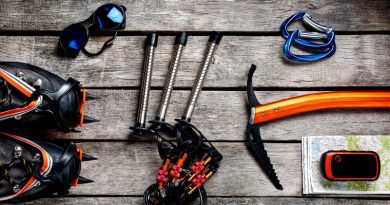
What Are the Best Lures for Bass Fishing?
Deciding on the best lure
As the early morning mist hugged the edges of the lake, I pondered a question that every angler eventually faces, a question as old as the sport itself: “What are the best lures for bass fishing?” It’s not just a query—it’s a quest for that perfect union of craft and catch, where every twitch and turn can mean the difference between a story of success and one of what could have been.
Understanding the Lure of Lures
In the vast expanse of bass fishing, anglers are armed with an array of tools, each meticulously crafted to entice and outsmart a creature as common as it is elusive. Lures are far more than mere pieces of metal, plastic, or cloth; they are central to the angler’s toolkit, ingeniously designed to mimic the most tempting prey in a variety of aquatic environments.
Variety and Versatility of Lures
The effectiveness of any given lure can shift dramatically based on several environmental factors, including:
- Water Clarity: The visibility of the water often dictates the type of lure used. In crystal clear waters, lures that closely mimic the appearance and subtle movements of bass prey are preferred to deceive the keen-eyed predator.
- Temperature: Water temperature affects bass metabolism and activity levels, influencing their feeding behavior. Colder waters might require slower, more methodical lure presentations, whereas warmer waters might support more aggressive techniques.
- Depth: Depending on how deep the bass are, different lures might be needed to reach or float above them effectively.
- Time of Day: Light levels influence lure selection. For example, low light conditions such as dawn or dusk may benefit from lures with enhanced visibility or vibration.
Types of Lures
Each type of lure is designed with a specific scenario or behavior in mind, optimizing its effectiveness under certain conditions:
- Jigs: Renowned for their versatility, jigs can be effective in almost any fishing condition. They can be jigged off the bottom or used to mimic a creature crawling along the substrate, making them irresistible to bass.
- Spinnerbaits: These are excellent for covering large areas of water quickly. Their spinning motion and reflective flash are perfect for murky waters where visibility is low, attracting bass through vibration and bright flashes.
- Crankbaits: Designed to dive to specific depths and mimic the movement of baitfish, crankbaits are ideal for targeting bass located in mid-water or near submerged structures.
- Soft Plastics: When a delicate touch is needed, soft plastics shine. They can be rigged in various ways to replicate the natural movement of worms, crustaceans, and other bass prey with lifelike accuracy.
- Topwater Lures: For the thrill-seeker, nothing matches the excitement of a bass exploding on a lure at the surface. These lures work best in low-light conditions, when bass are more likely to strike at surface prey.
Selecting the Right Lure
Selecting the ideal lure is a blend of art and empirical knowledge, distilled from years of experience and shared stories:
- Match the Hatch: The foundational principle in lure selection is to emulate the natural prey of bass in the environment. This involves not only choosing the right type of lure but also matching the size, shape, and coloration to what the bass are naturally feeding on.
- Consider the Conditions: The clarity of the water can significantly affect lure choice. In clear water, a more naturally colored lure is typically more effective, while in stained or murky water, brighter colors or lures that produce more vibration may be necessary to attract bass.
- Seasonal Strategies: The time of year can dictate different approaches to lure selection. In spring, during the bass spawn, different lures may be more effective compared to the heat of summer or the decline of fall, reflecting changes in bass activity and dietary preferences.
Choosing the right lure requires a deep understanding of both the target species and the environment, meshing seamlessly with an angler’s strategy and conditions on the water. Through thoughtful selection and strategic application, each lure not only represents a chance to catch a bass but also embodies the fusion of science, art, and the age-old dance between angler and fish.
Essential Tools and Resources
To truly harness the power of these lures, you’ll need more than just a tackle box:
- A Well-Organized Tackle Box: Keeping your lures well-organized and accessible can make all the difference.
- Local Fishing Reports: These can provide insights into what lures are working best in current conditions.
- A Reliable Fishing Rod and Reel: Match your gear to the type of lure you are using to maximize both performance and comfort.
Conclusion
As the sun broke through the clouds, casting light across the ripples of the lake, I reflected on the journey of choosing the right lure. It’s a path marked by personal preference, punctuated by the thrill of the chase, and perfected through persistence and passion. The best lures for bass fishing aren’t just about what’s trendy or new; they’re about what connects the angler to the water, the fish, and the story yet to be told. Each cast is a narrative in motion, a chance to meld tradition with technique, and every lure in your arsenal carries a tale of its own.






